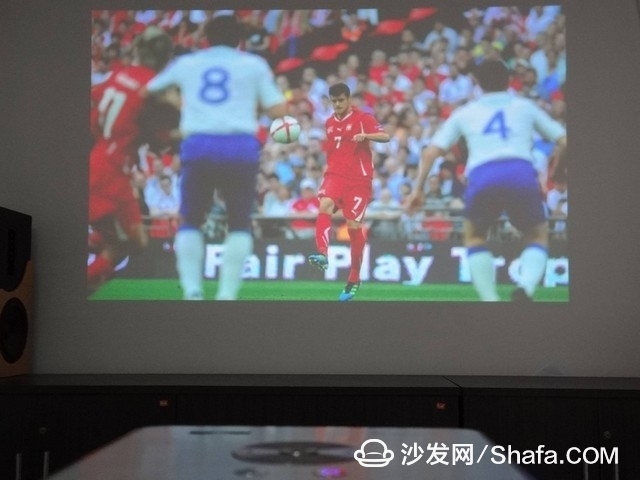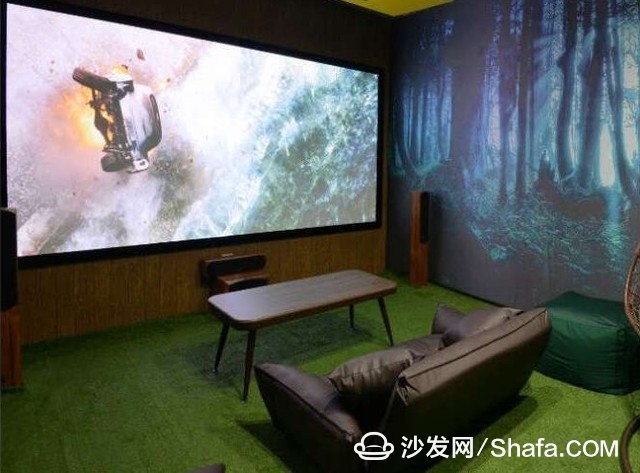In fact, projector brightness has always been a hot topic, and many users aren't fully aware of how it's measured or what it really means. Today, I'm going to break down the story behind projector brightness and hope it helps you make a smarter choice if you're in the market for a new projector.
Are all routines telling the story behind the brightness of the projector
To start with, let’s go over some basic concepts. Projector brightness is typically categorized into three types: maximum brightness, peak brightness, and ANSI brightness. Maximum brightness refers to the average light output when the projector is set to its brightest mode—meaning high brightness, contrast, and lamp settings. Peak brightness, on the other hand, is the highest light output at a single point on the screen, which isn’t representative of the overall image. ANSI brightness, however, is the most reliable measurement because it follows a standardized test method, making it more relevant for everyday use.
Eight gray levels for test brightness and 13 illumination test points
Now, here's the catch: if a projector is labeled as 3,500 lumens, that usually refers to the peak brightness—not what you’ll see in normal use. Most users expect that number to be consistent across all viewing conditions, but that’s not the case. In reality, the actual usable brightness (ANSI) is often much lower. Some projectors may only deliver around 50-70% of their stated brightness, which means a 3,500-lumen projector might only give you 1,750 to 2,500 lumens in real-life situations. That’s a big difference!
If the brightness of a home projector is marked as 3,500 lumens, the user may think that it will reach 3,500 lumens in the daily viewing, but it is not. The 3500 lumens mean the peak brightness. The picture is not clear, so this value does not make sense to the user.
Friends who are concerned about our evaluation should note that whether they are home or commercial projectors, their actual ANSI brightness will be very difficult if they can reach 70% of the nominal brightness, and some products are even only nominally 50%. In other words, a nominal projection of 3500 lumens, the user actually uses only 2500 lumens to 1750 lumens. Look, it's full of routines.
The standard manufacturer of brightness is full of routines
Another common issue is that some manufacturers inflate their brightness numbers by using misleading terminology or even falsifying results. While this was more common in the past, especially with traditional lamp-based projectors, it still happens today. As the industry evolves and consumers become more informed, these practices are becoming rarer—but not entirely gone.
In the future, the brightness of the projector will become less and less
So, what can you do? First, don’t rely solely on the manufacturer’s claims. Try to experience the projector in person if possible. Also, look for third-party reviews or independent testing that uses ANSI standards. As technology improves and transparency increases, we can expect fewer exaggerated claims and more accurate measurements in the future.
If you’re looking for smart TV or streaming box updates, check out Smart TV Info Network (http://), a leading platform for smart TV and streaming box news, reviews, and guides. Stay informed and make smarter choices when buying your next projector or smart device.
Porcelain Fuse Cutout
Dropout Fuse Cutout and load drop fuse cutout are outdoor used high-voltage protective devices. They are connected with the main lines of the distribution transformer or the distribution wires to protect the transformer or wires from short circuit and overload, and on/off loading current. Dropout fuse cutout consists of insulating bracket and fuse tube. The static contacts are fixed on the two ends of bracket, while the moving contacts are fixed on the two ends of fuse tube. Fuse tube is composed of inner extinction tube and the outer epoxy glass tube. The load drop fuse cutout is added with elastic supporting contacts and arcing shield for switching on-off loading current. In normal operation, the fuse tube will form an enclosure via its tightened fuse link. The fuse will be melt off quickly and form an arc if there is any fault, the extinction tube is heated by the arc, exploding much gas to give high pressure into the tube and blow along with the tube, so the arc is quickly elongated and extinguished. When the fuse is cut off, moving contacts at the bottom turn down without tension; the locking frame will release the fuse, so the fuse drops to form obvious break. When it needs to put load on, start the contact with insulating cod, then the static and moving contacts are still keeping in touch, keep pulling the contacts till the supporting contacts apart. Then there is the arc among the supporting contacts, which is prolonged in the narrow space of arcing shield.At the same time, the arc extinguishing cover generates gas, and the arc is extinguished when the current exceeds zero.
Porcelain Fuse Cutout,Drop Fuse Cutout,Fuse Link Cut Out,Cutout Fuse Holder
Jilin Nengxing Electrical Equipment Co. Ltd. , https://www.nengxingelectric.com



